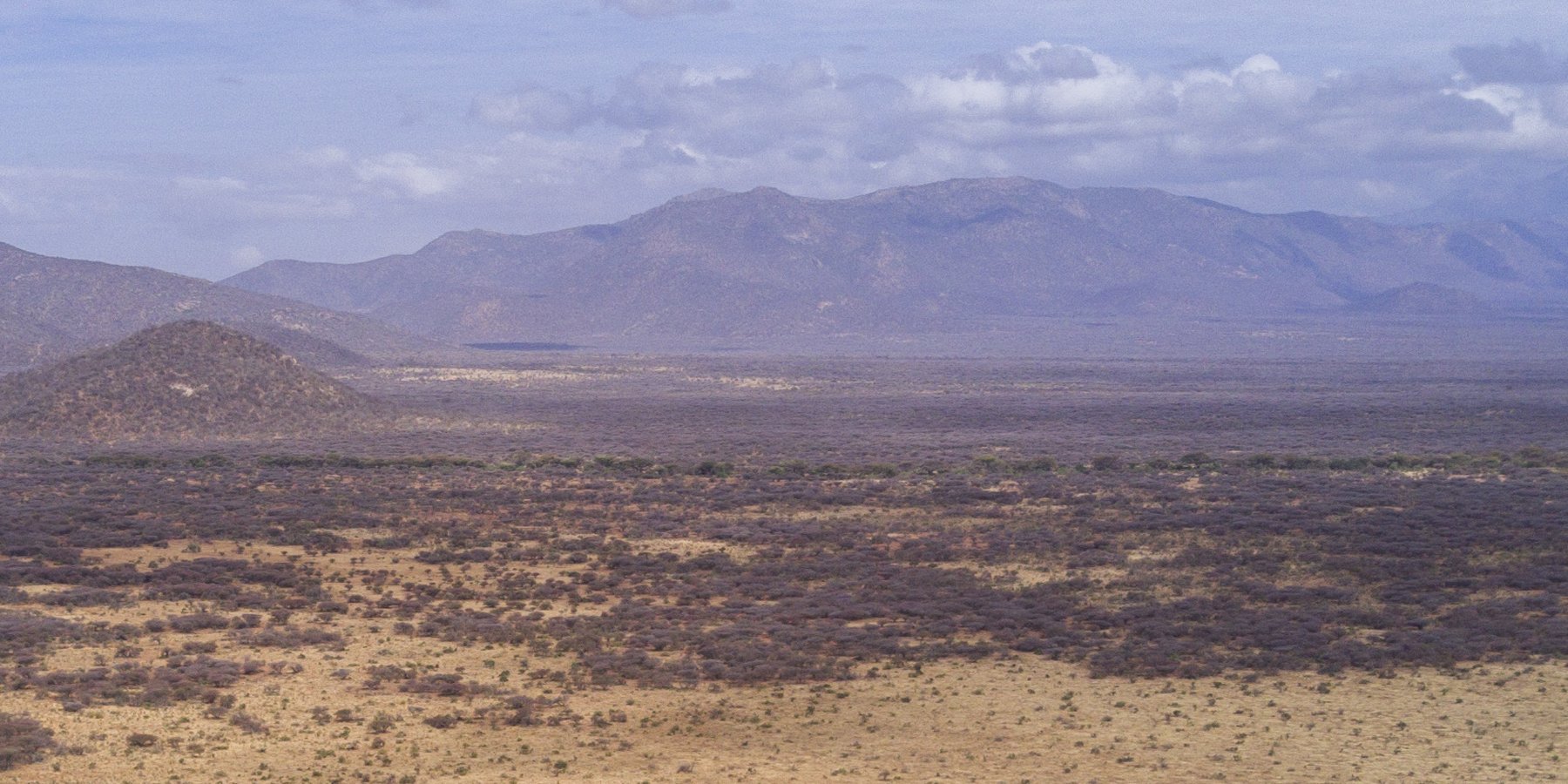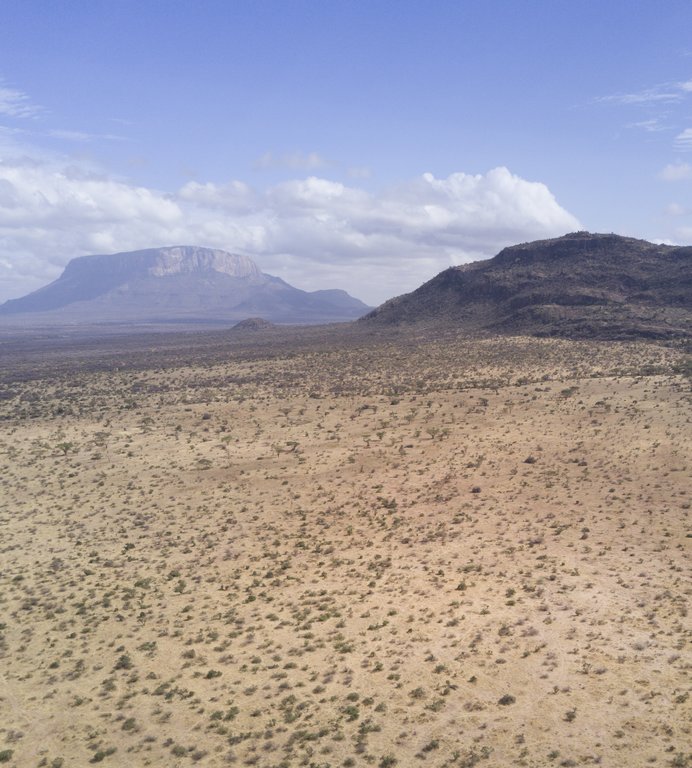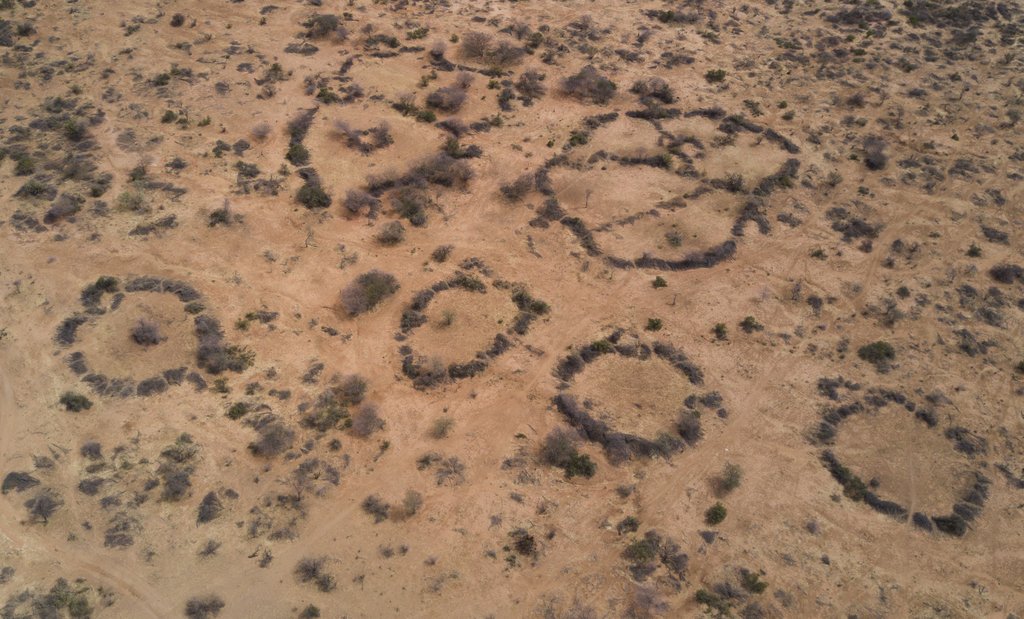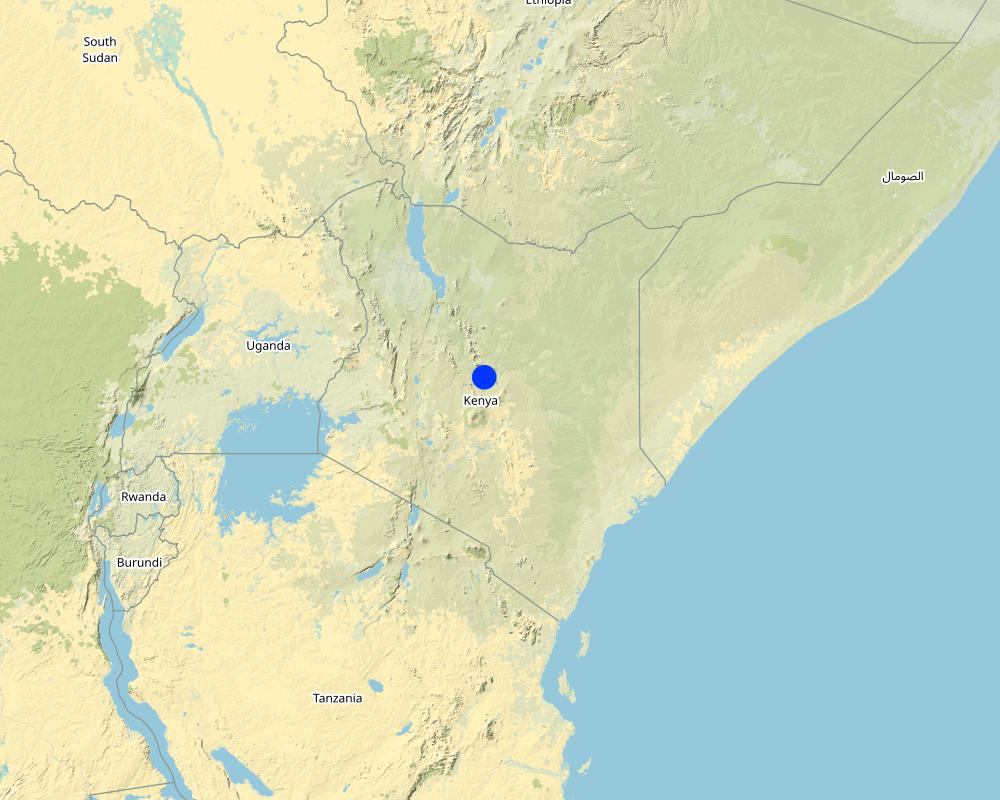Holistic Rangeland Management combined with high end tourism [ເຄັນຢາ]
- ການສ້າງ:
- ປັບປູງ:
- ຜູ້ສັງລວມຂໍ້ມູນ: Harry Wells
- ບັນນາທິການ: –
- ຜູ້ທົບທວນຄືນ: Donia Mühlematter, Rima Mekdaschi Studer, Simone Verzandvoort, Hanspeter Liniger, Joana Eichenberger
"Ramat engop"
approaches_3399 - ເຄັນຢາ
- ສະຫຼຸບສັງລວມຢ່າງທັງໝົດທີ່ເປັນ PDF
- ສັງລວມເປັນບົດ PDF ເພື່ອສັ່ງພິມ
- ສັງລວມເປັນບົດ ຢູ່ໃນ browser
- ບົດສະຫຼຸບ ສະບັບເຕັມ (ບໍ່ມີແບບຟອມ)
- Holistic Rangeland Management combined with high end tourism: Nov. 2, 2021 (public)
- Holistic Rangeland Management combined with high end tourism: Aug. 10, 2018 (inactive)
- Holistic Rangeland Management combined with high end tourism: Oct. 22, 2018 (inactive)
- Holistic Rangeland Management combined with high end tourism: Sept. 3, 2018 (inactive)
- Holistic Rangeland Management combined with high end tourism: May 6, 2018 (inactive)
ເບິ່ງພາກສ່ວນ
ຂະຫຍາຍທັງໝົດ ຍຸບທັງໝົດ1. ຂໍ້ມູນທົ່ວໄປ
1.2 ລາຍລະອຽດ ການຕິດຕໍ່ ຂອງບຸກຄົນທີ່ຊັບພະຍາກອນ ແລະ ສະຖາບັນ ການມີສ່ວນຮ່ວມ ໃນການປະເມີນຜົນ ແລະ ເອກະສານ ຂອງວິທີທາງ
ບຸກຄົນສຳຄັນ (ຫຼາຍຄົນ)
ຜູ້ນໍາໃຊ້ທີ່ດິນ:
ຊື່ຂອງໂຄງການ ທີ່ອໍານວຍຄວາມສະດວກ ໃນການສ້າງເອກກະສານ ຫຼື ປະເມີນດ້ານແນວທາງ (ຖ້າກ່ຽວຂ້ອງ)
Book project: Guidelines to Rangeland Management in Sub-Saharan Africa (Rangeland Management)1.3 ເງື່ອນໄຂ ຂອງການນໍາໃຊ້ເອກກະສານຂໍ້ມູນ ຂອງ WOCAT
ເມື່ອໃດທີ່ໄດ້ສັງລວມຂໍ້ມູນ (ຢູ່ພາກສະໜາມ)?
11/02/2018
ຜູ້ສັງລວມ ແລະ ບັນດາຜູ້ຕອບແບບສອບຖາມ ຍອມຮັບໃນເງື່ອນໄຂ ການນໍາໃຊ້ຂໍ້ມູນເອກະສານ ທີ່ສ້າງຂື້ນ ໂດຍຜ່ານ ອົງການ WOCAT:
ແມ່ນ
2. ພັນລະນາ ແນວທາງການຄຸ້ມຄອງນໍາໃຊ້ດິນແບບຍືນຍົງ
2.1 ການອະທິບາຍ ໂດຍຫຍໍ້ ຂອງວິທີທາງ
The establishment of a community wildlife conservancy facilitates (1) 'holistic rangeland management' refering to a to the implementation of a suite of management practices aimed at sustaining and/or improving rangeland productivity such as 'bunched grazing' (livestock concentrated for short duration intensive grazing), short-term 'bomas' (livestock corrals occupied for ~7 days), clearing invasive species and reseeding with grass to assist land rehabilitation/restoration; and (2) High end tourism and monetary donations facilitated by the Northern Rangelands Trust provide funding for the implementation of improved grazing practices and additional income for the community and the reduction of livestock grazing pressure.
2.2 ການອະທິບາຍ ລາຍລະອຽດ ຂອງວິທີທາງ
ການອະທິບາຍ ລາຍລະອຽດ ຂອງວິທີທາງ:
Kalama Community Wildlife Conservancy has been established with a hierarchical structure led by a board of 13 members (5 female, 8 male), one representing each of the 13 'zones' of the Conservancy. There are also three subcommittees for grazing, finances and tourism. The main aims are to improve the involvement of the community members in the overall management of the conservancy, the generation of additional income from high end tourism and wildlife conservation and the investment into improved land management. The main sources of funding are revenue from contracted high end tourism operation and donations (facilitated by Northern Rangelands Trust). The approximate breakdown of the funding sources is: Tourism including selling of handicrafts (60%), Donors (25%), County Government (5%), Livestock Trading (5%), Camping (5%). Improved livelihood and ownership in the management as well as shared responsibility and benefits are key incentives for the community members.
Within the conservancy an attractive site on a hill overlooking the plains has been leased to an investor for the establishment of an exclusive tourist lodge on the principle of “invest, operate and transfer”, where the investor builds the infrastructure operates is for an agreed period and then transfers it to the community. Further several comping grounds are available for lower budget tourists. The conservancy profits from the neighbouring Samburu Game Reserves. This provides regular income from the lease of the land the entrance fees into the conservancy, employment opportunities for conservancy members (for catering, kitchen, house cleaning, rangers providing security for tourists and protection for wildlife as well as guides for safaris and for entertainment) and a market for selling handicrafts and souvenirs. Another cornerstone is their relationships with two trusts (Northern Rangeland Trust and the Grevy’s Zebra Trust). They have been supportive in the implementation of several holistic rangeland management practices, which include 'bunched grazing' (livestock concentrated for short duration intensive grazing), short-term 'bomas' (livestock corrals occupied for ~7 days), clearing invasive species and reseeding with grass to assist land rehabilitation/restoration. The main aims are to maintain and/or improve rangeland productivity. Regarding methods, 'bunched grazing' is implemented by a team of herders ensuring the livestock are in a tight herd. Short-term 'bomas' are established on bare ground in the traditional manor (i.e. laying cut thorny woody vegetation on the ground to encircle livestock and help protect them from depredation during the night). Invasive woody vegetation can be used to erect these 'bomas'. Invasive species (predominantly Acacia reficiens) is cleared by hand using machetes during the dry season; branches cut ~1 m above the ground to prevent regrowth. Cut branches are laid on the bare ground beneath and seeds of Cenchrus ciliaris hand-broadcasted prior to the onset of rains. Members of the Kalama Community Wildlife Conservancy carry out these activities, both paid (clearing invasive species and reseeding) and unpaid ('bunched grazing' and short-term 'bomas'). Land users and tourists enjoy and value the benefits of increased forage availability in areas successfully rehabilitated but are dissatisfied with the limited extent of the rangeland improvement.
2.3 ຮູບພາບຂອງແນວທາງ
2.5 ປະເທດ / ເຂດ / ສະຖານທີ່ບ່ອນທີ່ແນວທາງໄດ້ຖືກນໍາໃຊ້
ປະເທດ:
ເຄັນຢາ
ພາກພື້ນ / ລັດ / ແຂວງ:
Samburu County
ຂໍ້ມູນເພີ່ມເຕີມຂອງສະຖານທີ່:
North of Archers Post Bordering Samburu Game Reserve
Map
×2.6 ວັນທີເລີ່ມຕົ້ນ ແລະ ສິ້ນສຸດ ການຈັດຕັ້ງປະຕີບັດ ວິທີທາງ
ສະແດງປີຂອງການເລີ່ມຕົ້ນ:
2006
ຖ້າຫາກບໍ່ຮູ້ຈັກປີທີ່ແນ່ນອນ, ໃຫ້ປະມານຄາດຄະເນ ເອົາມື້ທີ່ໄດ້ເລີ່ມຈັດຕັ້ງປະຕິບັດ ວິທີທາງ:
10-50 ປີ ຜ່ານມາ
2.7 ປະເພດຂອງແນວທາງ
- ພາຍໃຕ້ໂຄງການ / ແຜນງານ
2.8 ເປົ້າໝາຍ / ຈຸດປະສົງຫຼັກ ຂອງການຈັດຕັ້ງປະຕິບັດ ວິທີທາງ
The main objectives of the approach are to maintain and/or improve rangeland productivity.
2.9 ເງື່ອນໄຂອໍານວຍ ຫຼື ຂັດຂວາງການປະຕິບັດຂອງເຕັກໂນໂລຢີ / ເຕັກໂນໂລຢີການນໍາໃຊ້ຕາມແນວທາງ
ສັງຄົມ / ວັດທະນະທໍາ / ມາດຕະຖານ ແລະ ຄຸນຄ່າທາງສາສະໜາ
- ອໍານວຍ
Established traditional practice of erecting 'bomas', particularly using less valuable woody vegetation, facilitates implementation of short-term 'bomas' that only require a change in duration of occupancy.
- ເຊື່ອງຊ້ອນ
Traditional practices of herding one's own immediate family's livestock in separate herds deters land users from agreeing to combine herds into larger groups for 'bunched grazing' (also due to associated issues of disease transmission). Furthermore, lack of observation and enforcement of local grazing rules prevents necessary resting of grazing land.
ມີຄວາມສາມາດ / ເຂັ້າເຖິງຊັບພະຍາກອນດ້ານການເງິນ ແລະ ການບໍລິການ
- ອໍານວຍ
Supplementary income can lead to investment in activities unrelated to livestock husbandry (e.g. setting up small businesses or educating children) rather than increasing heard size, which may prevent further increases in pressure on the rangeland.
- ເຊື່ອງຊ້ອນ
Supplementary income often leads to the purchasing of more livestock, which further increases pressure on the rangeland.
ການຮ່ວມມື / ການປະສານງານຂອງຜູ້ກ່ຽວຂ້ອງ
- ອໍານວຍ
Clearing of invasive species and reseeding with grass undertaken by land users from all villages/zones of the Kalama Community Wildlife Conservancy.
- ເຊື່ອງຊ້ອນ
Individual concerns are at odds with that of the wider community, leading to opportunistic breaking of grazing rules and deterioration of communally managed rangeland.
ກ່ຽວກັບກົດໝາຍ (ສິດນໍາໃຊ້ດິນ, ສິດນໍາໃຊ້ນໍ້າ)
- ອໍານວຍ
To some extent provides sense of ownership over the land, which may motivate involvement in sustainable land management practices.
- ເຊື່ອງຊ້ອນ
Tenure of of the land is communal but livestock ownership is individual or at the level of immediate families, which creates tensions and conflicts regarding sustainable land management.
ການປົກຄອງທີ່ດິນ (ການຕັດສິນໃຈ, ການປະຕິບັດ ແລະ ຂໍ້ບັງຄັບ)
- ອໍານວຍ
Community-elected board (representative of the 13 villages/zones) and grazing committee together enable formalisation of grazing rules into by-laws.
- ເຊື່ອງຊ້ອນ
Grazing rules and by-laws not well implemented or adhered to.
ຄວາມຮູ້ກ່ຽວກັບການຄຸ້ມຄອງ ທີ່ດິນແບບຍືນຍົງ, ການເຂົ້າເຖິງການສະໜັບສະໜູນ ທາງດ້ານວິຊາການ
- ອໍານວຍ
Access to technical support from NGOs such as the Northern Rangelands Trust and Grevy's Zebra Trust.
- ເຊື່ອງຊ້ອນ
Lack of knowledge about SLM has lead to unsuccessful grassland rehabilitation efforts.
ຕະຫຼາດ (ໃນການຊື້ວັດຖຸດິບ, ຂາຍຜະລິດຕະພັນ) ແລະ ລາຄາ
- ອໍານວຍ
Located close to livestock market in the local town, Archer's Post.
- ເຊື່ອງຊ້ອນ
Limited direct access to markets further afield (e.g. Nairobi or international markets), with better prices.
ວຽກ, ມີກໍາລັງຄົນ
- ອໍານວຍ
Casual labour easily found within the community.
- ເຊື່ອງຊ້ອນ
Large areas of land awaiting rehabilitation, which would require large amounts of labour.
3. ການມີສ່ວນຮ່ວມ ແລະ ບົດບາດຂອງພາກສ່ວນທີ່ກ່ຽວຂ້ອງທີ່ໄດ້ມີສ່ວນຮ່ວມ
3.1 ຜູ້ມີສ່ວນຮ່ວມ ໃນວິທີທາງ ແລະ ພາລະບົດບາດ ຂອງເຂົາເຈົ້າ
- ຜູ້ນໍາໃຊ້ດິນໃນທ້ອງຖິ່ນ / ຊຸມຊົນທ້ອງຖິ່ນ
Local land users selected from villages/zones within the community of the conservancy.
Providing livestock for joint herding and boma-ing and providing labour for restoration activities (e.g. clearing invasive species and reseeding with grass). Provide services for the running of the wildlife conservancy and tourist activities.
- ຜູ້ຊ່ຽວຊານ ການນຄຸ້ມຄອງ ທີ່ດິນແບບຍືນຍົງ / ທີ່ປຶກສາດ້ານກະສິກໍາ
Advisors from the two trusts: Northern Rangeland Trust and Grevy's Zebra Trust for the support in the design and the implementation of the improved rangeland management practices.
Providing technical knowhow and sharing experiences with other rangeland users where the practices have been applied.
- ນັກຄົ້ນຄວ້າ
Master students from the universities in Kenya
Investigating into the state of the rangelands and monitoring changes
- ອົງການຈັດຕັ້ງ ທີ່ບໍ່ຂື້ນກັບລັດຖະບານ
Northern Rangelands Trust and Grevy's Zebra Trust
Provided funds for learning visits to a ranch implementing 'Holistic Rangeland Management' in Zimbabwe and costs of implementation in Kalama Community Wildlife Conservancy. Also provided technical support.
- ອໍານາດ ການປົກຄອງທ້ອງຖິ່ນ
County government employees related to tourism and management of Samburu Game Reserve
Making agreements for the use and sharing of income from tourism
- ອົງການຈັດຕັ້ງ ສາກົນ
Northern Rangeland Trust: Grevy's Zebra Trust
Joint planning of land management across the boundaries of the Community Wildlife Conservancy. Agreement for movement across boundaries and sharing of common resources
ຖ້າຫາກມີຫຼາຍພາກສ່ວນທີ່ເຂົ້າຮ່ວມ ໃຫ້ລະບຸ ອົງການທີ່ເປັນຫຼັກ ໃນການຈັດຕັ້ງປະຕິບັດ:
Kalama Wildlife Community Conservancy
3.2 ການມີສ່ວນຮ່ວມຂອງຜູ້ນໍາໃຊ້ທີ່ດິນໃນທ້ອງຖິ່ນ / ຊຸມຊົນທ້ອງຖິ່ນໃນໄລຍະທີ່ແຕກຕ່າງກັນຂອງແນວທາງ
| ການລວບລວມ ເອົາຜູ້ນໍາໃຊ້ດິນ ໃນທ້ອງຖິ່ນ / ຊຸມຊົນທ້ອງຖິ່ນ | ໃຫ້ລະບຸ ຜູ້ໃດທີ່ມີສ່ວນຮ່ວມ ໃນແຕ່ລະກິດຈະກໍາ? | |
|---|---|---|
| ການເລີ່ມຕົ້ນ / ແຮງຈູງໃຈ | ການຮ່ວມມື | Using their experience setting up other community conservancies in Kenya, the Northern Rangelands Trust was able to assist in defining the organisational structure of Kalama Conservancy. However, conservancies are not set up without the interest of the community in question. |
| ການວາງແຜນ | ການຮ່ວມມື | Kalama Conservancy's board, which plans the Holistic Rangeland Management activities, is composed of members of Kalama Conservancy and those elected by the members of the conservancy. The Northern Rangelands Trust, in particular, helps to plan activities. For example, the Northern Rangelands Trust raised funds to enable members of Kalama Conservancy to visit a ranch in Zimbabwe where Holistic Rangeland Management activities are practiced. |
| ການປະຕິບັດ | ການຮ່ວມມື | Members of Kalama Conservancy carry out the Holistic Rangeland Management activities. However, 25% of the costs are covered by donations and training related to specific activities is provided by Northern Rangelands Trust and Grevy's Zebra Trust. |
| ຕິດຕາມກວດກາ / ການປະເມີນຜົນ | ການຮ່ວມມື | The Northern Rangelands Trust commissioned a baseline survey of rangeland health in Kalama Conservancy, which was conducted in 2013. However, the Rangeland Coordinator, Benson Lelukai, was also trained by Northern Rangelands Trust to conduct informal rangeland health monitoring. As yet, no reports are available documenting the success or otherwise of the approach. |
3.4 ການຕັດສິນໃຈກ່ຽວກັບການຄັດເລືອກເຕັກໂນໂລຢີຂອງການຄຸ້ມຄອງທີ່ດິນແບບຍືນຍົງ / ເຕັກໂນໂລຢີ
ລະບຸ ຄົນທີ່ຕັດສິນໃຈ ກ່ຽວກັບການຄັດເລືອກຂອງ ເຕັກໂນໂລຢີ / ເຕັກໂນໂລຢີ ຈະໄດ້ຮັບການປະຕິບັດ:
- ຜູ້ຊ່ຽວຊານ ຫຼັກດ້ານການຄຸ້ມຄອງ ທີ່ດິນແບບຍືນຍົງ, ມີການຕິດຕາມປຶກສາຫາລືກັບຜູ້ນໍາໃຊ້ທີ່ດິນ
ອະທິບາຍ:
The Holistic Rangeland Management activities are closely modeled on those advocated by the Savory Institute. The Northern Rangelands Trust facilitated the introduction of the practices (e.g. bunched grazing and more frequently moved livestock corrals), which were implemented following consultation with Kalama Conservancy's members.
Specify on what basis decisions were made:
- ປະສົບການສ່ວນບຸກຄົນ ແລະ ຄວາມຄິດເຫັນ (ທີ່ບໍ່ເປັນເອກກະສານ)
4. ການສະໜັບສະໜູນທາງດ້ານວິຊາການ, ການສ້າງຄວາມສາມາດ, ແລະ ການຈັດການຄວາມຮູ້.
4.1 ການສ້າງຄວາມສາມາດ / ການຝຶກອົບຮົມ
ຜູ້ນໍາໃຊ້ທີ່ດິນ ຫຼື ພາກສ່ວນກ່ຽວຂ້ອງອື່ນໆ ໄດ້ຮັບການຝຶກອົບຮົມບໍ່?
ແມ່ນ
ໃຫ້ລະບຸ ຜູ້ໃດທີ່ໄດ້ຮັບການຝຶກອົບຮົມ:
- ຜູ້ນໍາໃຊ້ດິນ
ຮູບແບບຂອງການຝຶກອົບຮົມ:
- ກອງປະຊຸມ
4.2 ການບໍລິການໃຫ້ຄໍາປຶກສາ
ເຮັດຜູ້ໃຊ້ທີ່ດິນມີການເຂົ້າເຖິງການບໍລິການໃຫ້ຄໍາປຶກສາ?
ແມ່ນ
- personal communication
ອະທິບາຍ / ຄວາມຄິດເຫັນ:
The community work closely with Northern Rangelands Trust, which can provide advice.
4.3 ສະຖາບັນການສ້າງຄວາມເຂັ້ມແຂງ (ການພັດທະນາອົງການຈັດຕັ້ງ)
ສະຖາບັນ ໄດ້ຮັບການສ້າງຕັ້ງຂື້ນ ຫຼື ໄດ້ຮັບການສ້າງຄວາມເຂັ້ມແຂງ ໂດຍການຈັດຕັ້ງປະຕິບັດ ວິທີທາງບໍ່?
- ມີ, ພໍສົມຄວນ
ລະບຸ ທາງສະຖາບັນ ໄດ້ສ້າງຄວາມເຂັ້ມແຂງ ໃນລະດັບໃດ (ຫຼາຍ):
- ທ້ອງຖິ່ນ
ອະທິບາຍ ສະຖາບັນການຈັດຕັ້ງ, ພາລະບົດບາດ ແລະ ໜ້າທີ່ຮັບຜິດຊອບ, ສະມາຊິກ ແລະ ອື່ນໆ.
Establishment of board and grazing committee facilitate conservancy-level decisions.
ລະບຸ ປະເພດ ຂອງສະໜັບສະໜູນ:
- ທາງດ້ານການເງິນ
- ການສ້າງຄວາມອາດສາມາດ / ການຝຶກອົບຮົມ
ໃຫ້ລາຍລະອຽດເພີ່ມເຕີມ:
Northern Rangelands Trust provide financial assistance (USAID funding) and training together with Grevy's Zebra Trust (FAO funding).
4.4 ຕິດຕາມກວດກາ ແລະ ປະເມີນຜົນ
ການຈັດຕັ້ງປະຕິບັດ ວິທີທາງ ໄດ້ມີການປະເມີນຜົນ ແລະ ຕິດຕາມບໍ?
ແມ່ນ
ຄວາມຄິດເຫັນ:
But, so far, monitoring is informal and available documentation reporting outcomes of the approach is limited.
ຖ້າແມ່ນ, ເອກກະສານສະບັບນີ້ ແມ່ນໄດ້ນໍາໃຊ້ເຂົ້າໃນການຕິດຕາມ ແລະ ປະເມີນຜົນບໍ່?
ບໍ່ແມ່ນ
4.5 ການຄົ້ນຄວ້າ
ນີ້້ແມ່ນສ່ວນໜຶ່ງ ການຄົ້ນຄວ້າ ຂອງວິທີທາງບໍ່?
ບໍ່ແມ່ນ
5. ການສະໜັບສະໜູນທາງດ້ານການເງິນ ແລະ ອຸປະກອນຈາກພາຍນອກ
5.1 ງົບປະມານປະຈໍາປີ ສໍາລັບວິທີທາງ ຂອງການຄຸ້ມຄອງ ທີ່ດິນແບບຍືນຍົງ
ສະແດງງົບປະມານ ປະຈໍາປີ ສໍາລັບອົງປະກອບ ຂອງວິທີທາງ ການຄຸ້ມຄອງ ທີ່ດິນແບບຍືນຍົງ ເປັນໂດລາສະຫະລັດ :
24447.00
ຖ້າຫາກບໍ່ຮູ້ຈັດງົບປະມານທີ່ແນ່ນອນ ແມ່ນໃຫ້ປະມານເອົາ:
- 10,000-100,000
ຄໍາເຫັນ (ຕົວຢ່າງ: ແຫຼ່ງຂໍ້ມູນຫຼັກ ຂອງການສະໜອງທຶນ / ຜູ້ໃຫ້ທຶນທີ່ສໍາຄັນ):
Main sources of funding are revenue from contracted high end tourism operation and donations (facilitated by Northern Rangelands Trust). Rough breakdown: Tourism including selling of handicrafts (60%), Donors (25%), County Government (5%), Livestock Trading (5%), Camping (5%).
5.2 ການສະໜັບສະໜູນ ທາງດ້ານການເງິນ / ອຸປະກອນ ສະໜອງໃຫ້ແກ່ຜູ້ນໍາທີ່ດິນ
ຜູ້ນໍາໃຊ້ດິນ ໄດ້ຮັບການສະໜັບສະໜູນ ທາງດ້ານ ການເງິນ / ອຸປະກອນ ໃນການຈັດຕັ້ງປະຕິບັດ ເຕັກໂນໂລຢີບໍ?
ແມ່ນ
ຖ້າແມ່ນ, ໃຫ້ລະບຸປະເພດ (ຫຼາຍ) ຂອງການສະໜັບສະໜູນ, ເງື່ອນໄຂ ແລະ ຜູູ້ສະໜອງ (ຫຼາຍ):
Financial support provided to cover costs associated with activities (e.g. labour, logistics).
5.3 ເງິນສົມທົບສໍາລັບການນໍາໃຊ້ສະເພາະປັດໃຈຂາເຂົ້າໃນການຜະລີດກະສິກໍາ (ລວມທັງແຮງງານ)
- ແຮງງານ
| ທີ່ຂອບເຂດ | ລະບຸ ການອຸດໜູນ |
|---|---|
| ງົບປະມານເຕັມສ່ວນ |
- ອື່ນໆ
| ອື່ນໆ (ລະບຸ) | ທີ່ຂອບເຂດ | ລະບຸ ການອຸດໜູນ |
|---|---|---|
| logistics (fuel) | ງົບປະມານເຕັມສ່ວນ |
ຖ້າແຮງງານ ຂອງຜູ້ນໍາໃຊ້ດິນ ໄດ້ຮັບການສະໜັບສະໜູນ ປັດໃຈຂາເຂົ້າ, ແມ່ນບໍ່:
- ຈ່າຍເປັນເງິນສົດ
5.4 ສິນເຊື່ອ
ໄດ້ປ່ອຍສິນເຊື່ອ ສະໜອງໃຫ້ພາຍໃຕ້ ວິທີການສໍາລັບກິດຈະກໍາ ການຄຸ້ມຄອງ ທີ່ດິນແບບຍືນນຍົງບໍ່?
ບໍ່ແມ່ນ
5.5 ສິ່ງຈູງໃຈ ຫຼື ເຄື່ອງມືອື່ນໆ
ການສົ່ງເສີມ ຈັດຕັ້ງປະຕິບັດ ເຕັກໂນໂລຢີ ໃນການຄຸ້ມຄອງ ດິນແບບຍືນຍົງ ໄດ້ສະໜອງສິ່ງກະຕຸກຊຸກຍູ້ບໍ່?
ບໍ່ແມ່ນ
6. ວິເຄາະຜົນກະທົບ ແລະ ສັງລວມບັນຫາ
6.1 ຜົນກະທົບຂອງແນວທາງ
ວິທີທາງ ຊ່ວຍຊຸກຍູ້ ຜູ້ນຳໃຊ້ທີ່ດິນທ້ອງຖີ່ນ, ໃນການປັບປຸງ ການມີສ່ວນຮ່ວມ ຂອງຜູ້ທີ່ກ່ຽວຂ້ອງ ບໍ່?
- ບໍ່
- ມີ, ໜ້ອຍໜຶ່ງ
- ມີ, ພໍສົມຄວນ
- ມີ, ຫຼາຍ
Restoration efforts hired labour from all zones of the conservancy.
ການນໍາໃຊ້ ວິທີທາງ ດັ່ງກ່າວນີ້ ສາມາດເປັນຫຼັກຖານ ທີ່ສະໜັບສະໜູນ ໃຫ້ການຕັດສິນໃຈໄດ້ບໍ່?
- ບໍ່
- ມີ, ໜ້ອຍໜຶ່ງ
- ມີ, ພໍສົມຄວນ
- ມີ, ຫຼາຍ
Some monitoring is conducted but informal and not comprehensive.
ການຈັດຕັ້ງປະຕິບັດ ວິທີທາງ ສາມາດຊ່ວຍຜູ້ນໍາໃຊ້ທີ່ດິນ ໃນການຈັດຕັ້ງປະຕິບັດ ແລະ ບໍາລຸງຮັກສາ ເຕັກໂນໂລຢີ ການຄຸ້ມຄອງ ທີ່ດິນແບບຍືນຍົງໄດ້ບໍ?
- ບໍ່
- ມີ, ໜ້ອຍໜຶ່ງ
- ມີ, ພໍສົມຄວນ
- ມີ, ຫຼາຍ
The organizational structure of the conservancy provided a framework for inter-village coordination with respect to SLM.
ການນໍາໃຊ້ ວິທີທາງ ສາມາດປັບປຸງ ການປະສານງານ ແລະ ຄ່າໃຊ້ຈ່າຍ ການຈັດຕັ້ງປະຕິບັດ ທີ່ມີປະສິດທິພາບ ຂອງການຄຸ້ມຄອງ ທີ່ດິນແບບຍືດຍົງໄດ້ບໍ່?
- ບໍ່
- ມີ, ໜ້ອຍໜຶ່ງ
- ມີ, ພໍສົມຄວນ
- ມີ, ຫຼາຍ
The organizational structure of the conservancy provided a framework for inter-village coordination with respect to SLM.
ການນໍາໃຊ້ ວິທີທາງ ສາມາດລະດົມ ຫຼື ປັບປຸງ ການເຂົ້າເຖິງຊັບພະຍາກອນ ການເງິນ ສໍາລັບການຈັດຕັ້ງປະຕິບັດ ການຄຸ້ມຄອງ ທີ່ດິນແບບຍືດຍົງໄດ້ບໍ່?
- ບໍ່
- ມີ, ໜ້ອຍໜຶ່ງ
- ມີ, ພໍສົມຄວນ
- ມີ, ຫຼາຍ
Substantial income from tourism allowed investment into improved rangeland management.
ການນໍາໃຊ້ ວິທີທາງ ສາມາດປັບປຸງຄວາມຮູ້ ແລະ ຄວາມສາມາດຂອງຜູ້ນໍາໃຊ້ທີ່ດິນ ໃນການປະຕິບັດ ການຄຸ້ມຄອງ ທີ່ດິນແບບຍືດຍົງໄດ້ບໍ່?
- ບໍ່
- ມີ, ໜ້ອຍໜຶ່ງ
- ມີ, ພໍສົມຄວນ
- ມີ, ຫຼາຍ
Training provided by the conservancy's institutional partners (NRT and GZT) contributed to developing SLM capacity.
ການນໍາໃຊ້ ວິທີທາງ ສາມາດປັບປຸງຄວາມຮູ້ ແລະ ຄວາມສາມາດ ຂອງພາກສ່ວນທີ່ກ່ຽວຂ້ອງໄດ້ບໍ່?
- ບໍ່
- ມີ, ໜ້ອຍໜຶ່ງ
- ມີ, ພໍສົມຄວນ
- ມີ, ຫຼາຍ
Learning visits to rangeland restoration sites invited members of other communities around the country to be exposed to restoration practices and their impacts.
ການນໍາໃຊ້ ວິທີທາງ ສາມາດສ້າງຄວາມເຂັ້ມແຂງ ໃຫ້ສະຖາບັນການຈັດຕັ້ງ, ການຮ່ວມມື ລະຫວ່າງພາກສ່ວນທີ່ກ່ຽວຂ້ອງບໍ່?
- ບໍ່
- ມີ, ໜ້ອຍໜຶ່ງ
- ມີ, ພໍສົມຄວນ
- ມີ, ຫຼາຍ
The organizational structure of the conservancy provided a framework for inter-village collaboration.
ການນໍາໃຊ້ ວິທີທາງ ສາມາດຫຼຸດຜ່ອນ ຂໍ້ຂັດແຍ່ງໄດ້ບໍ່?
- ບໍ່
- ມີ, ໜ້ອຍໜຶ່ງ
- ມີ, ພໍສົມຄວນ
- ມີ, ຫຼາຍ
Job creation mitigated conflicts, particularly the jobs made available to young warrior class individuals (e.g. motorbike driver), who would otherwise be arming themselves and rustling livestock.
ການຈັດຕັ້ງປະຕິບັດ ວິທີທາງ ສາມາດສ້າງຄວາມເຂັ້ມແຂງ ທາງສັງຄົມ ແລະ ເສດຖະກິດບໍ່?
- ບໍ່
- ມີ, ໜ້ອຍໜຶ່ງ
- ມີ, ພໍສົມຄວນ
- ມີ, ຫຼາຍ
No particular measures to benefit socially disadvantaged groups was mentioned.
ການຈັດຕັ້ງປະຕິບັດ ວິທີທາງ ສາມາດປັບປຸງ ຄວາມສະເໜີພາບ ຂອງບົດບາດ ຍິງຊາຍ ແລະ ສ້າງຄວາມເຂັ້ມແຂງໃຫ້ຜູ້ຍິງໄດ້ບໍ່?
- ບໍ່
- ມີ, ໜ້ອຍໜຶ່ງ
- ມີ, ພໍສົມຄວນ
- ມີ, ຫຼາຍ
Bead-work markets facilitated by NRT created income opportunities for women.
ການຈັດຕັ້ງປະຕິບັດ ວິທີທາງ ສາມາດຊຸກຍູ້ ຜູ້ນໍາໃຊ້ທີ່ດິນທີ່ເປັນຊາວໜຸ່ມ / ຄົນລຸ້ນໃໝ່ ໃນການຄຸ້ມຄອງ ທີ່ດິນແບບຍືນຍົງໄດ້ບໍ?
- ບໍ່
- ມີ, ໜ້ອຍໜຶ່ງ
- ມີ, ພໍສົມຄວນ
- ມີ, ຫຼາຍ
Young people were also involved in the rangeland restoration efforts.
ການຈັດຕັ້ງປະຕິບັດ ວິທີທາງ ສາມາດປັບປຸງ ປະເດັນການຖືຄອງທີ່ດິນ / ສິດທິໃນການນໍາໃຊ້ທີ່ດິນ ທີ່ເຊື່ອງຊ້ອນໃນການຈັດຕັ້ງປະຕິບັດ ເຕັກໂນໂລຢີ ການຄຸ້ມຄອງ ທີ່ດິນແບບຍືນຍົງໄດ້ບໍ?
- ບໍ່
- ມີ, ໜ້ອຍໜຶ່ງ
- ມີ, ພໍສົມຄວນ
- ມີ, ຫຼາຍ
The conservancy structure provides land tenure security and increases the motivation to practice SLM.
ການນໍາໃຊ້ ວິທີທາງ ໄດ້ປັບປຸງ ການຄໍ້າປະກັນສະບຽງອາຫານ ຫຼື ປັບປຸງໂຄສະນາການໄດ້ບໍ່?
- ບໍ່
- ມີ, ໜ້ອຍໜຶ່ງ
- ມີ, ພໍສົມຄວນ
- ມີ, ຫຼາຍ
The increased income through tourism and donor funding may have led to improved food security/nutrition, but difficult to judge.
ການຈັດຕັ້ງປະຕິບັດ ວິທີທາງ ສາມາດປັບປຸງ ການເຂົ້າເຖິງຕະຫຼາດໄດ້ບໍ?
- ບໍ່
- ມີ, ໜ້ອຍໜຶ່ງ
- ມີ, ພໍສົມຄວນ
- ມີ, ຫຼາຍ
NRT create a market for their livestock by buying and selling to ranchers for fattening programmes.
ການນໍາໃຊ້ ວິທີທາງ ໄດ້ປັບປຸງ ການເຂົ້າເຖິງນໍ້າ ແລະ ສາຂາພິບານໄດ້ບໍ່?
- ບໍ່
- ມີ, ໜ້ອຍໜຶ່ງ
- ມີ, ພໍສົມຄວນ
- ມີ, ຫຼາຍ
Donor funding enabled the establishment of a clinic, which has greatly increased access to health care.
ການນໍາໃຊ້ ວິທີທາງ ໄດ້ປັບປຸງ ການນໍາໃຊ້ແຫຼ່ງພະລັງງານ ແບບຍືນຍົງຫຼາຍຂື້ນບໍ່?
- ບໍ່
- ມີ, ໜ້ອຍໜຶ່ງ
- ມີ, ພໍສົມຄວນ
- ມີ, ຫຼາຍ
No reported change in energy sources.
ການຈັດຕັ້ງປະຕິບັດ ວິທີທາງ ສາມາດສ້າງຄວາມອາດສາມາດໃຫ້ຜູ້ນໍາໃຊ້ດິນ ໃນການປັບຕົວ ຕໍ່ການປ່ຽນແປງດິນຟ້າອາກາດ / ຫຼດຜ່ອນຄວາມສ່ຽງທາງໄພພິບັດໄດ້ບໍ? :
- ບໍ່
- ມີ, ໜ້ອຍໜຶ່ງ
- ມີ, ພໍສົມຄວນ
- ມີ, ຫຼາຍ
Over such a short period, this is difficult to make any statements about.
ການນໍາໃຊ້ ວິທີທາງ ໄດ້ປັບປຸງ ການຈ້າງງານ, ໂອກາດ ໃນການສ້າງລາຍຮັບບໍ່?
- ບໍ່
- ມີ, ໜ້ອຍໜຶ່ງ
- ມີ, ພໍສົມຄວນ
- ມີ, ຫຼາຍ
The conservancy structure creates jobs such as: managerial, committee membership, accounting, security, temporary labour.
6.2 ແຮງຈູງໃຈຫຼັກຂອງຜູ້ນໍາໃຊ້ທີ່ດິນໃນການປະຕິບັດການຄຸ້ມຄອງທີ່ດິນແບບຍືນຍົງ
- ການຜະລິດເພີ່ມຂຶ້ນ
- ຫຼຸດຜ່ອນດິນເຊື່ອມໂຊມ
- ການຊໍາລະເງິນ / ເງິນອຸດໜູນ
Initial costs for the establishment of the practices (e.g. cutting of invasive species are fully covered through income and resources from tourism and support from the trusts
- ການປັບປຸງຄວາມງົດງາມ
attractive landscape less degraded and monotonous due to one invasive species
- Improved attractiveness for tourism and fooder for wildlife ???
6.3 ຄວາມຍືນຍົງຂອງກິດຈະກໍາວິທີທາງ
ຜູ້ນໍາໃຊ້ ທີ່ດິນ ສາມາດສືບຕໍ່ ການຈັດຕັ້ງປະຕິບັດ ຜ່ານວິທີທາງໄດ້ບໍ່ (ໂດຍປາດສະຈາກ ການຊ່ວຍເຫຼືອ ຈາກພາກສ່ວນພາຍນອກ)?
- ບໍ່ແນ່ນອນ
ຖ້າ ບໍ່ ຫຼື ບໍ່ແນ່ໃຈ, ໃຫ້ອະທິບາຍ ແລະ ຄໍາເຫັນ:
Lack of funding prevents larger areas from being rehabilitated through clearing of invasive species and reseeding with grass. Moreover, inability to control grazing pressure to give adequate rest to rehabilitating areas has led to unsuccessful restoration efforts. However, restoration efforts may gradually become voluntary in the future and land users may be incentivised to adhere to local grazing rules.
6.4 ຈຸດແຂງ / ຂໍ້ດີ ຂອງວິທີທາງ
| ຈຸດແຂງ / ຂໍ້ດີ / ໂອກາດໃນການນໍາໃຊ້ທີ່ດິນ |
|---|
| Land previously considered unproductive is now considered grazing land. |
| Increased infiltration, reduced run-off and soil erosion. |
| Regeneration of the grassland in the 'core conservation area' (a central area with minimised grazing pressure demarcated for tourism) attracts wildlife, which in turn benefits tourism. |
| ຈຸດແຂງ / ຈຸດດີ / ໂອກາດ ຈາກທັດສະນະຂອງຜູ້ປ້ອນຂໍ້ມູນ ຫຼື ບຸກຄົນສຳຄັນ |
|---|
| Where implemented, restoration activities and reduced grazing pressure have increased productivity and diversity or grasses and forbs for livestock and wildlife forage. |
| Takes advantage of inherent capacity of the land to recover. |
| Improved attractiveness for tourism |
6.5 ຈຸດອ່ອນ / ຂໍ້ເສຍຂອງແນວທາງ ແລະ ວິທີການແກ້ໄຂໃຫ້ເຂົາເຈົ້າ
| ຈຸດອ່ອນ / ຂໍ້ເສຍ / ຄວາມສ່ຽງໃນມູມມອງຂອງຜູ້ນໍາໃຊ້ທີ່ດິນ | ມີວິທີການແກ້ໄຂຄືແນວໃດ? |
|---|---|
| The expectation from the community regarding the tourism-related jobs and income are too high. | Raising awareness about the limitations of benefits from tourism. |
| Increased pressure on 'Core Area' due to higher grass/forage production. | Strictly enforce local by-laws that restrict grazing in the 'Core Area'. |
| Rangers under-equipped and lack sufficient capacity. | Source more equipment and provide training/capacity building for rangers. |
| ຈຸດອ່ອນ ຫຼື ຂໍ້ເສຍ ຫຼື ຄວາມສ່ຽງ ໃນມຸມມອງຂອງ ຜູ້ສັງລວມຂໍ້ມູນ ຫຼື ບັນດາຜູ້ຕອບແບບສອບຖາມ | ມີວິທີການແກ້ໄຂຄືແນວໃດ? |
|---|---|
| Very few land users are implementing the practices (e.g. short-term 'bomas' and 'bunched grazing'). | Although likely unfeasible, one possible solution might be for the community to manage the livestock communally and share the produce rather than individual ownership, which creates conflicts in motivation between the individual and the wider community. |
| Paying community members to undertake restoration activities has limited the area rehabilitated to date and led to a reliance on donor funding for land restoration. This may also be eroding the community's social capital by placing a monetary value on land health and thus devaluing it and replacing the inherent sense of value of land health that may have existed previously. | Encouraging voluntary participation in restoration activities may not only increase the area rehabilitated but also improve long-term maintenance through cultivating a sense of ownership. |
| Lack of adherence to and enforcement of grazing rules limits the success of sustainable land management efforts. | Strictly enforce local grazing rules and by-laws. |
7. ເອກກະສານອ້າງອີງ ແລະ ຂໍ້ມູນການເຊື່ອມໂຍງ
7.1 ວິທີການ / ແຫຼ່ງຂໍ້ມູນ
- ການໄປຢ້ຽມຢາມພາກສະໜາມ, ການສໍາຫຼວດພາກສະໜາມ
2 field visits.
- ການສໍາພາດ ຜູ້ນໍາໃຊ້ທີ່ດິນ
3 informants (Manager, Rangeland Coordinator and Chair of Grazing Committee).
- ສໍາພາດ ຊ່ຽວຊານ ການຄຸ້ມຄອງ ດິນແບບຍືນຍົງ
2 informants (Northern Rangelands Trust and Grevy's Zebra Trust employees)
- ການລວບລວມ ບົດລາຍງານ ແລະ ເອກະສານອື່ນໆ ທີ່ມີຢູ່ແລ້ວ
1 report, 1 technical guideline document, and 1 poster.
7.2 ເອກະສານທົ່ວໄປທີ່ສາມາດໃຊ້ໄດ້
ຫົວຂໍ້, ຜູ້ຂຽນ, ປີ, ISBN:
Northern Rangeland Trust: Baseline assessment of rangeland health - Kalama and Namunyak conservancies, Leigh A. Winowiecki & Tor-G. Vågen2014
ມີຢູ່ໃສ?ມູນຄ່າເທົ່າໃດ?
Available online at no cost.
7.3 ການເຊື່ອມຕໍ່ກັບຂໍ້ມູນທີ່ກ່ຽວຂ້ອງທີ່ສາມາດໃຊ້ອອນໄລນ໌
ຫົວຂໍ້ / ພັນລະນາ:
Northern Rangeland Trust: Baseline assessment of rangeland health - Kalama and Namunyak conservancies
URL:
https://cgspace.cgiar.org/bitstream/handle/10568/65671/nrtReport_march2014.pdf?sequence=1
ຂໍ້ມູນການເຊື່ອມຕໍ່ ແລະ ເນື້ອໃນ
ຂະຫຍາຍທັງໝົດ ຍຸບທັງໝົດການເຊື່ອມຕໍ່
ບໍ່ມີຂໍ້ມູນການເຊື່ອມຕໍ່
ເນື້ອໃນ
ບໍ່ມີເນື້ອໃນ






